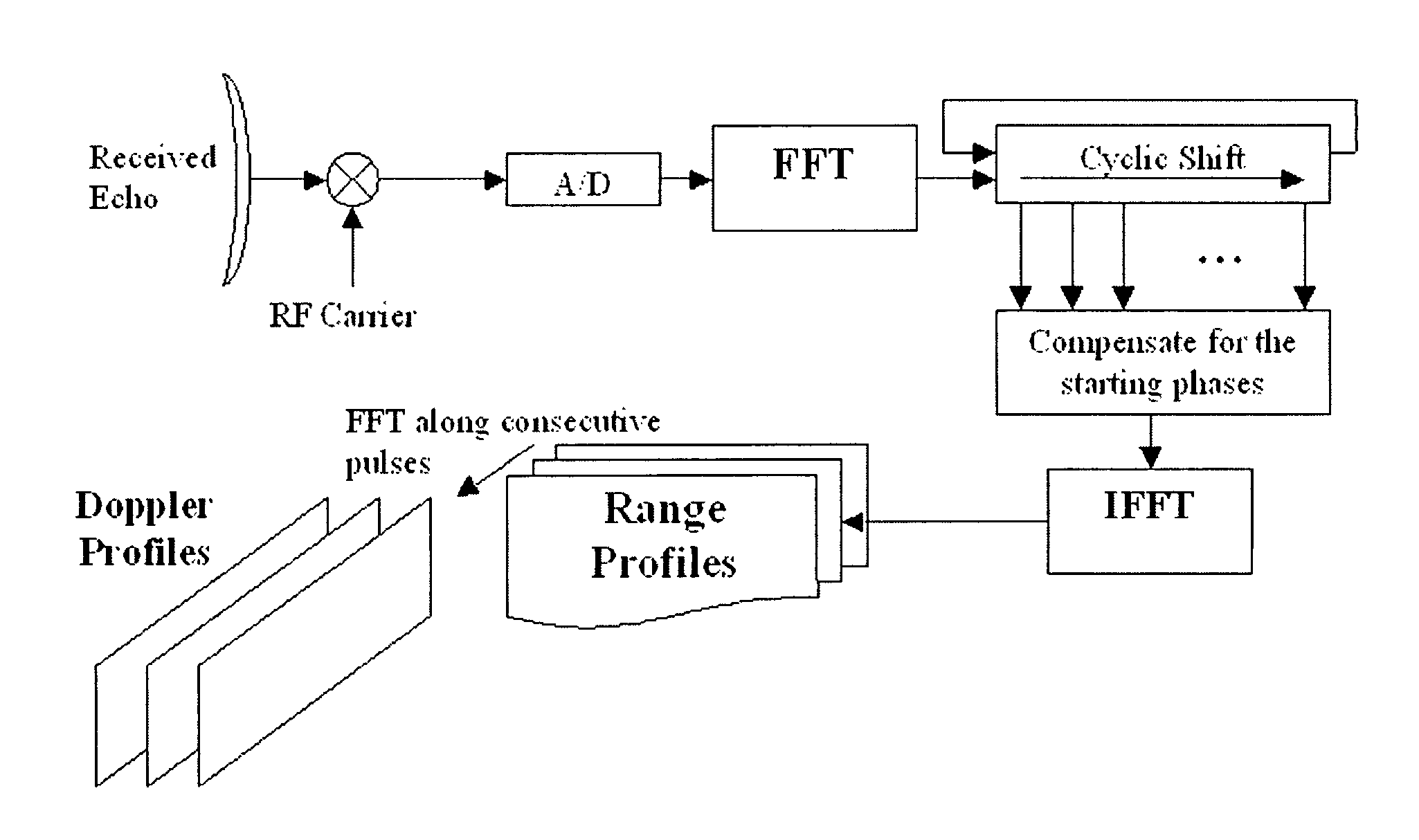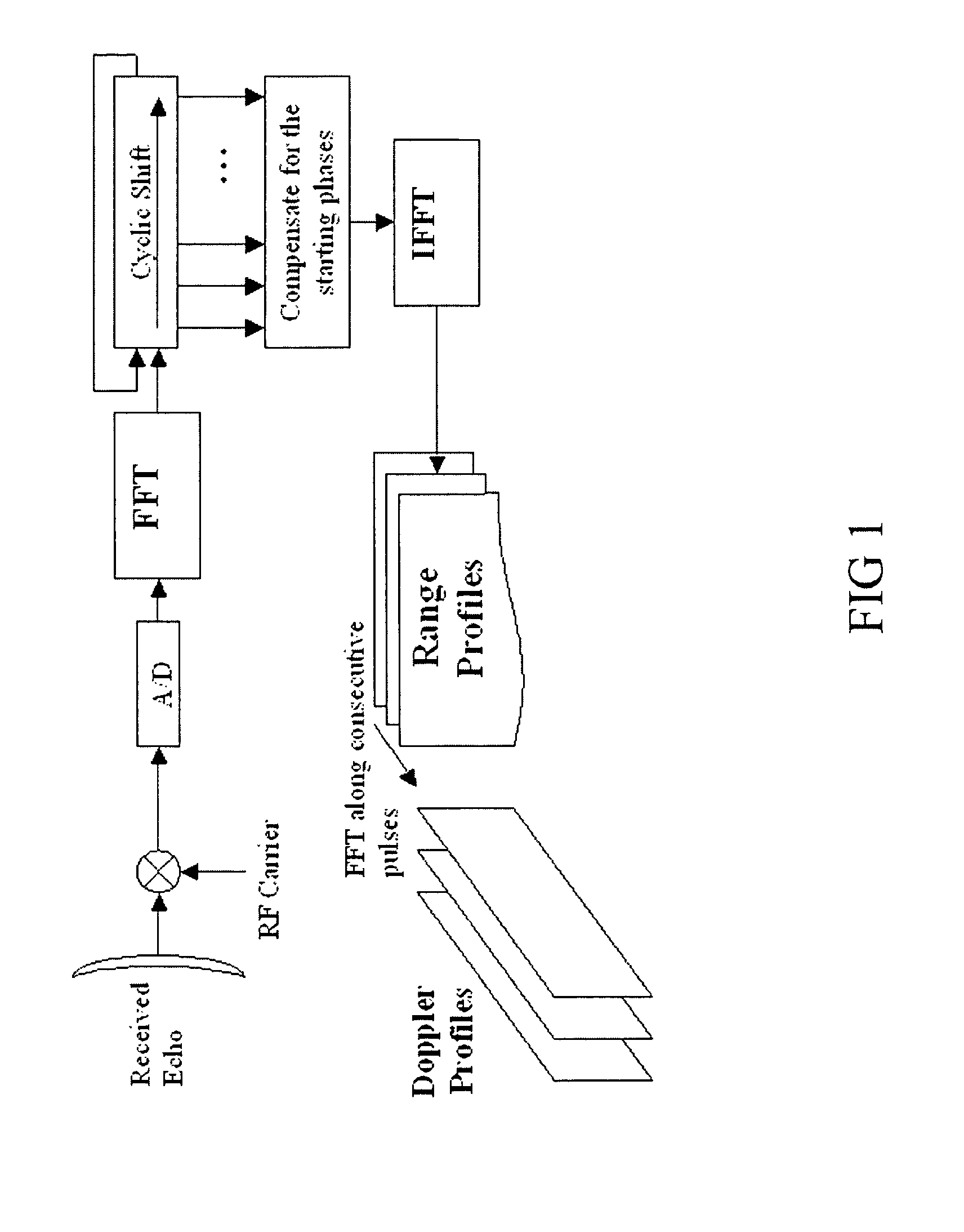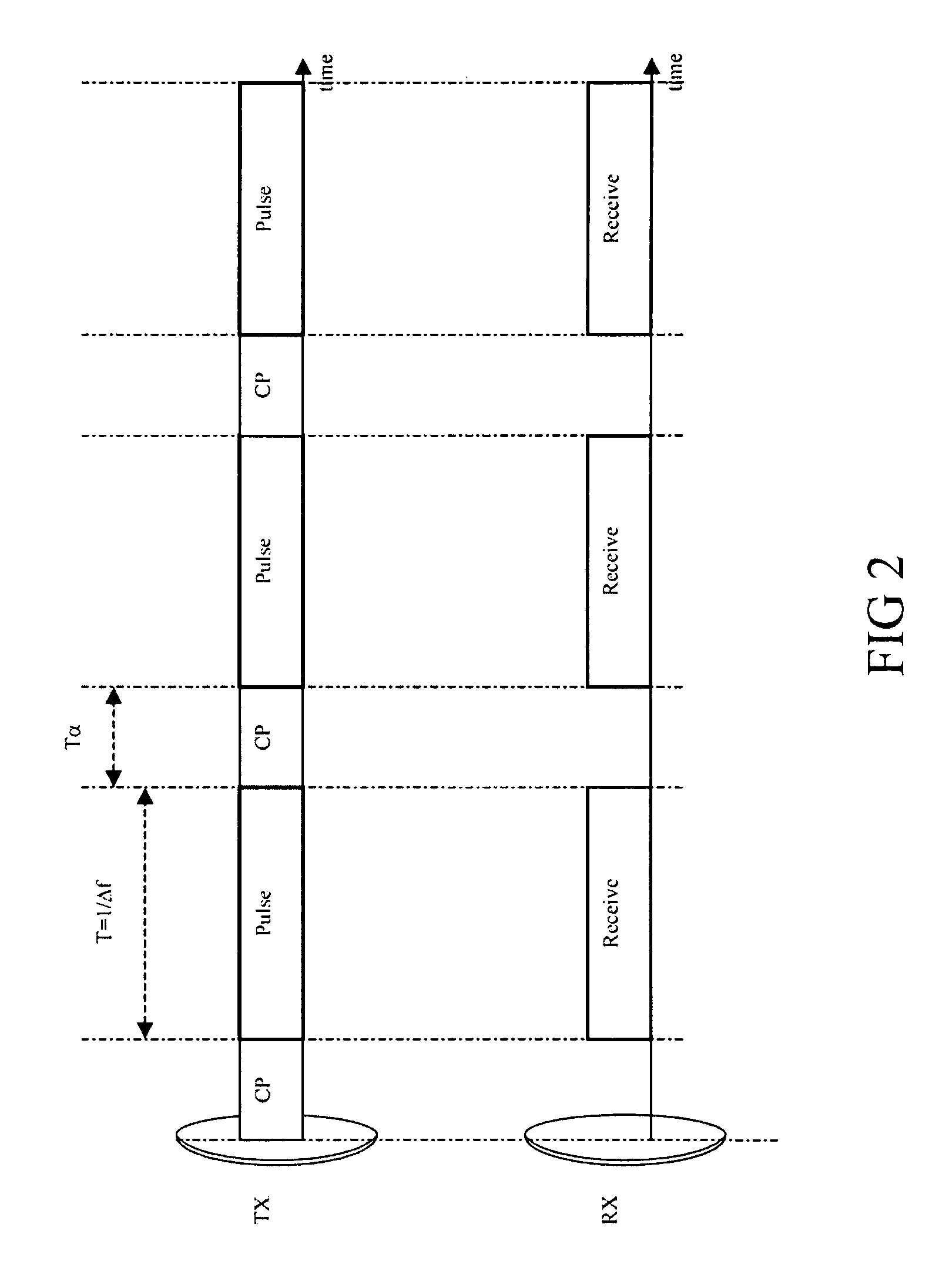Method for measuring the radial velocity of a target with a doppler radar
a radar and target technology, applied in the field of radars, can solve the problems of ambiguity in range, limited transmission power capability of pulsed radars, and the need for radar beams to spend longer time on targets
- Summary
- Abstract
- Description
- Claims
- Application Information
AI Technical Summary
Benefits of technology
Problems solved by technology
Method used
Image
Examples
Embodiment Construction
[0052]The signal structure utilizes multiple carriers forming the OFDM waveform. The OFDM waveform p(n) is the sum of carriers pk(n), presented in discrete form as
[0053]p(n)=∑m=0N-1xmexp{jϕm}exp{j2πmΔf(nN-1)T},(1)
where xm exp{jφm} is the amplitude and phase of the complex symbol modulating the carrier m, N is the number of carriers, and T=1 / Δf is the symbol duration with Δf the carrier spacing. Thus, carrier m has amplitude xm and initial phase φm. The complex symbols modulating each carrier can be considered as being transmitted in parallel. The processing method presented here imposes no limitations on the choice of the phases of the symbols, covering all phase coding schemes as applied in radar and communication applications.
[0054]The carriers are said to be orthogonal under the relation:
[0055]ck=∑n=0N-1∑m=0N-1xmexp{jϕm}exp{j2πmΔf(nN-1)T}exp{-j2π(nN-1)k}.(2)
[0056]The mathematical relationship between the orthogonal carriers hold only when the wavef...
PUM
 Login to View More
Login to View More Abstract
Description
Claims
Application Information
 Login to View More
Login to View More - R&D
- Intellectual Property
- Life Sciences
- Materials
- Tech Scout
- Unparalleled Data Quality
- Higher Quality Content
- 60% Fewer Hallucinations
Browse by: Latest US Patents, China's latest patents, Technical Efficacy Thesaurus, Application Domain, Technology Topic, Popular Technical Reports.
© 2025 PatSnap. All rights reserved.Legal|Privacy policy|Modern Slavery Act Transparency Statement|Sitemap|About US| Contact US: help@patsnap.com



